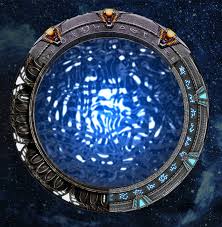- cross-posted to:
- chevron7@lemmy.world
- stargate@lemmy.ml
- cross-posted to:
- chevron7@lemmy.world
- stargate@lemmy.ml
cross-posted from: https://lemmy.ml/post/19018726
Ran into this recently and was really impressed. The Stargate Project (website) is by Kristian Tysse (youtube).


Some more food for thought,
S03E19 - New Ground | How does the destination gate get locks as it’s being dialed on Earth?
It just looks cool is the likely answer here. Gate dials were always kind of tension building, and having to wait for a connection would be more than just anticlimactic. Though this could’ve been probably solved by designing the waiting period as another “building up” thing, like some intense swirling noise and vibrations intensifying instead of the phone example or some elevator music playing.
Isn’t there an episode where a gould is dialing in and blasting the iris? Like, he dials in faster than they can establish a wormhole connection themselves, and then sends shit through, blasting the iris and heating it up(because the iris is like one atoms space away from the event horizon). When he starts dialing in, they only have X seconds to try to dial out themselves.
Now here’s where my memory is fuzzy: Samantha reprograms the gate dialing software to dial faster. Faster than a traditional dialer can. They talk about “we only have X time between gate closing and when he can dial back”. I seem to remember them trying to dial out during that time, locking chevrons in, and then the sequence being overridden by the incoming gould connection. So wed see like 5 chevrons lock, then it would suddenly break and be that other incoming call. They had to dial out BEFORE that call incoming connected. So they were locking in chevrons on Earth side for a call out while a call was being placed to earth from elsewhere. So chevrons CANT lock simultaneously or you couldn’t do that. It has to be one after the other.
deleted by creator